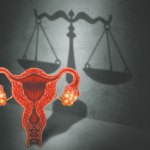In its June 24 decision in Dobbs, the Supreme Court (SCOTUS) quoted a Mississippi law that states abortion is “demeaning to the medical profession.”9 But you wonder whether instead it is SCOTUS that is now demeaned. And with all your vaunted training and accolades, you have been thrust into the time warp of Texas’ inner sanctum horrors and its post-Dobbs antediluvian laws in which social media—but not a doctor—can be consulted for pregnancy care.
It was you who sent the patient to the emergency department because she was bleeding heavily. The obstetrician on call knew the rules of EMTALA [the Emergency Medical Treatment and Labor Act], requiring that one must treat an emergency, and determined the patient required an emergency abortion.10-12 Your colleague has an outstanding reputation for providing pregnant patients with evidence-based, essential healthcare.
Although this patient needed, and met, medical criteria for emergency care, she did not meet political criteria allowing for an exception to prohibited abortions. That exception, found in Section 170A.002 of Texas’ law, mandates that an abortion could be performed to save a mother’s life when “the pregnant female … has a life-threatening physical condition … arising from a pregnancy that places the female at risk of death … .”13 Because the patient was not in shock, only had a rapid heartbeat and her hematocrit was only down to 30%, she was not yet at “death’s door.”
The obstetrician also knew of the September 2021 amicus brief, submitted in Dobbs by the American College of Obstetricians and Gynecologist, the American Medical Association and many other medical organizations, that stated “abortion is a safe and essential component of healthcare.”14
The obstetrician questions why risk of a patient’s death is to be ignored just because bureaucrats sitting safely in their offices have issued laws that go against sound medical science. They have no understanding of emergent obstetrical issues or reproductive health and have provided no directives on what a physician is to do when faced with a medical situation that requires immediate attention.
The state has created a classic catch-22 conundrum for physicians. It has barred physicians from relying on their professional judgment and traditional medical standards and procedures, and coerced compliance with the Texas law by threatening fines and imprisonment for its violation. But the state has not issued any alternative standards and procedures to be used in lieu of the best practices of medical treatment. This places you and the obstetrician in triple jeopardy: You may be sued for malpractice for failure to treat, lose your license, and be fined and go to jail.


